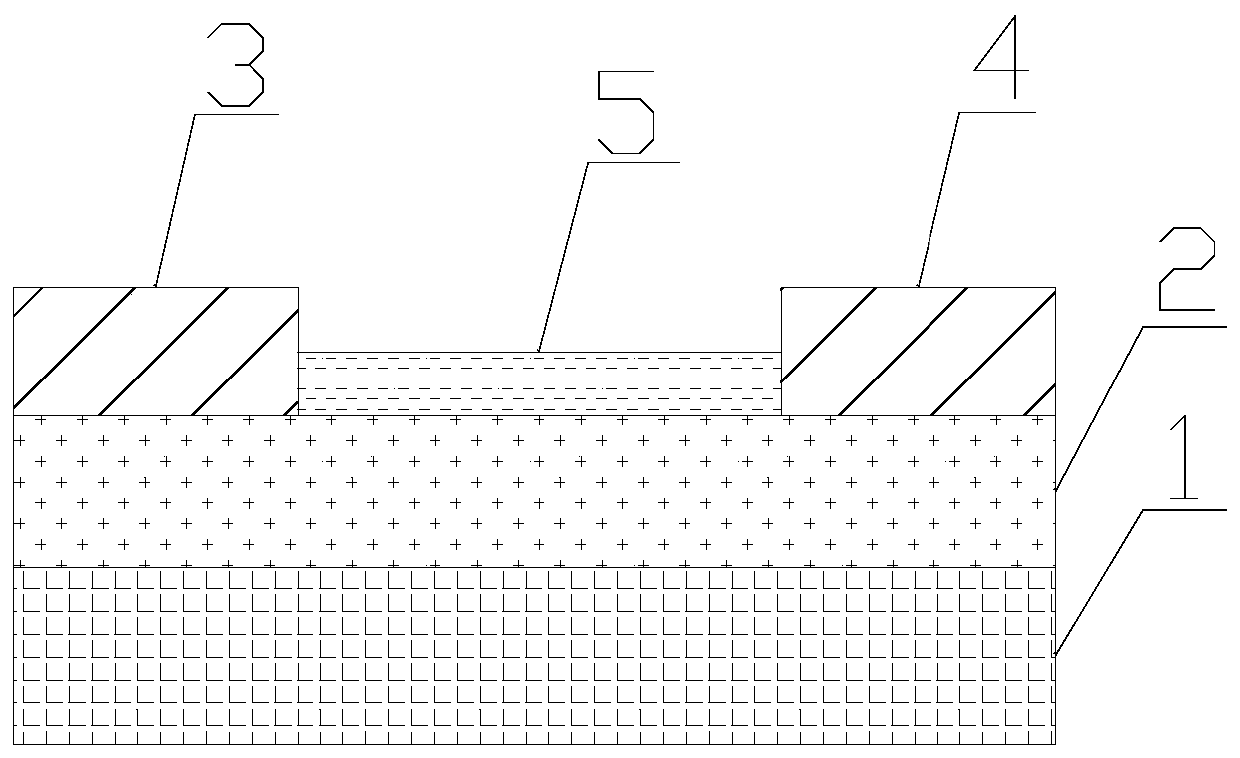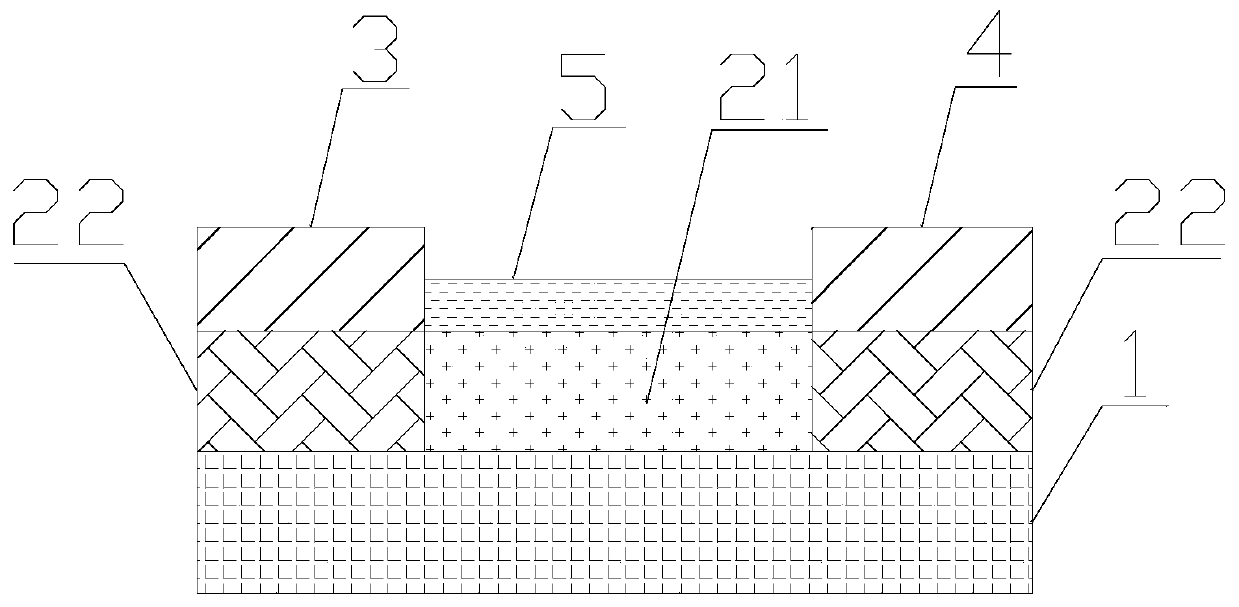Ultra-sensitive temperature sensor based on molecular device
A temperature sensor and molecular device technology, applied in the field of temperature sensing, can solve the problems of low sensitivity of temperature sensor, difficult to apply in small space, large size of temperature sensor, etc., and achieve the effect of high sensitivity, easy application in small space and small volume
- Summary
- Abstract
- Description
- Claims
- Application Information
AI Technical Summary
Problems solved by technology
Method used
Image
Examples
Embodiment 1
[0018] The present invention provides an ultrasensitive temperature sensor based on molecular devices, such as figure 1 As shown, the temperature sensor includes a substrate 1 , a thermal expansion layer 2 , a source 3 , a drain 4 , and organic molecules 5 . The thermal expansion layer 2 is an insulating material, and the thermal expansion layer 2 is placed on the substrate 1 . The source electrode 3 , the drain electrode 4 and the organic molecule 5 are placed on the thermal expansion layer 2 . The material of the source electrode 3 and the drain electrode 4 is gold or graphene. Organic molecules 5 extend between the source 3 and the drain 4 . That is to say, the organic molecule 5 is placed on the thermal expansion layer 2 and connected between the source electrode 3 and the drain electrode 4, and the connection may be physical contact, covalent bond connection or chemical adsorption connection. The organic molecule 5 is dodecyl mercaptan, anthracene mercaptan, and octyl ...
Embodiment 2
[0022] On the basis of Embodiment 1, the thermal expansion layer 2 includes a positive thermal expansion material portion 21 and a negative thermal expansion material portion 22 . Such as figure 2 As shown, the positive thermal expansion material part 21 is located under the organic molecule 5 , and the negative thermal expansion material part 22 is located under the source electrode 3 and the drain electrode 4 . When the thermal expansion layer 2 absorbs heat, the positive thermal expansion material part 21 expands and elongates the organic molecule 5; the negative thermal expansion material part 22 contracts, which is equivalent to pulling the positive thermal expansion material part 21, so that the positive thermal expansion material part 21 expands more, which also makes the positive thermal expansion material part 21 expand. The organic molecule 5 is elongated more, produces more deformation, changes more the conductance between the source electrode 3 and the drain elect...
PUM
 Login to View More
Login to View More Abstract
Description
Claims
Application Information
 Login to View More
Login to View More - R&D Engineer
- R&D Manager
- IP Professional
- Industry Leading Data Capabilities
- Powerful AI technology
- Patent DNA Extraction
Browse by: Latest US Patents, China's latest patents, Technical Efficacy Thesaurus, Application Domain, Technology Topic, Popular Technical Reports.
© 2024 PatSnap. All rights reserved.Legal|Privacy policy|Modern Slavery Act Transparency Statement|Sitemap|About US| Contact US: help@patsnap.com









